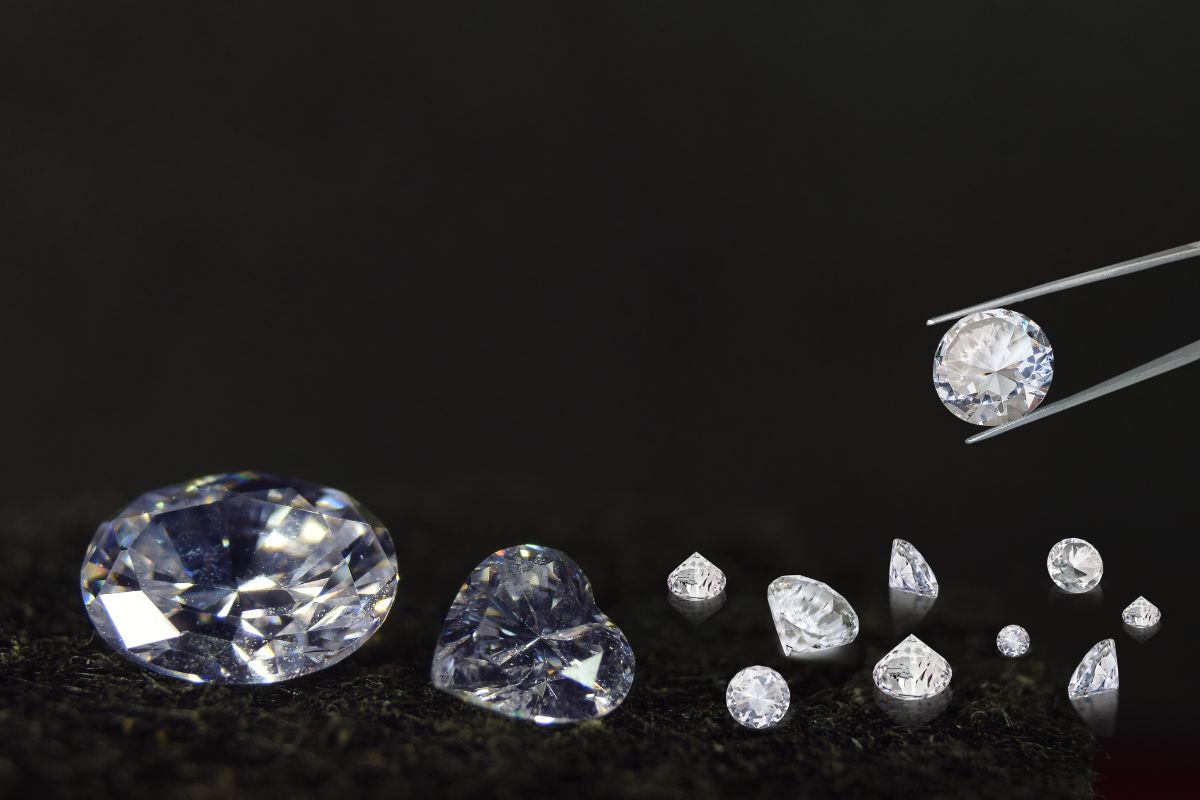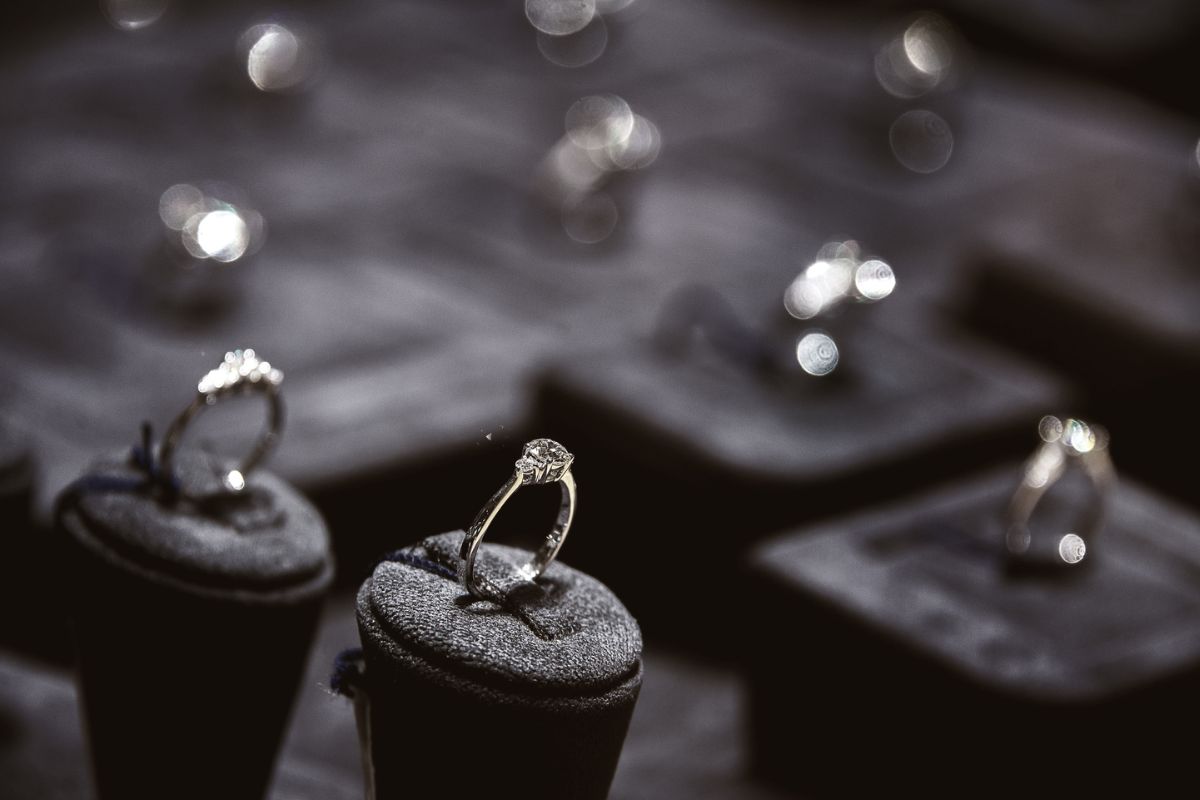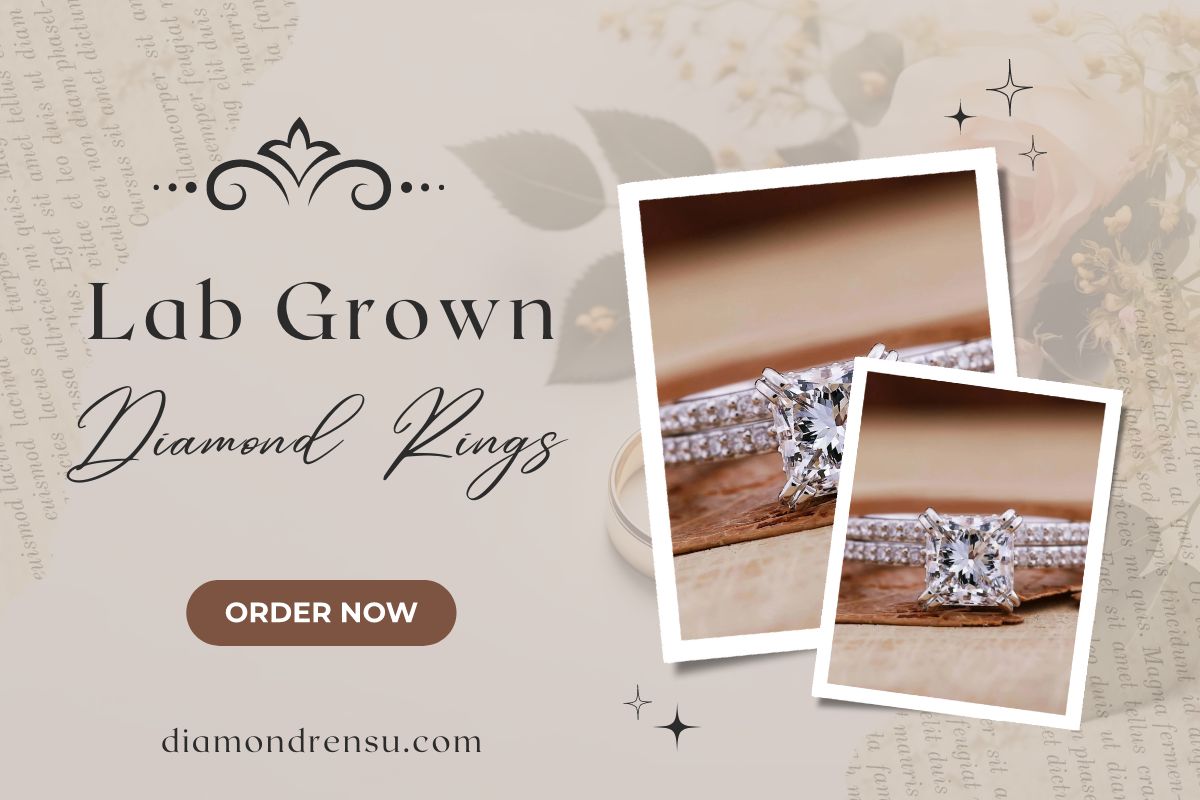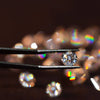
Pros and Cons of Lab-Grown Diamonds: An Impartial Analysis
Lab-grown diamonds have emerged as a modern alternative to traditional mined diamonds, combining the allure of precious stones with advanced technology. As you consider your jewelry options, it's important to weigh the advantages and disadvantages of these gems, which are also known as cultured or synthetic diamonds. They are, in essence, the same as their natural counterparts in terms of chemical composition and aesthetic qualities, but their origin in a laboratory setting marks a significant difference.
Dream More, Spend Less – Find the Jewelry Meant for You!
One of the primary benefits of lab-grown diamonds is their environmental and ethical appeal. The process of creating diamonds in a controlled environment reduces the need for disruptive mining activities, and you can enjoy your jewelry knowing it's free from the convoluted supply chains associated with "blood diamonds" or conflict gems. Additionally, they often come at a reduced cost compared to mined diamonds, making them an accessible option for many.
However, it's important to understand that while lab-grown diamonds hold certain advantages, there are also considerations on the flip side. Some jewelry enthusiasts may prefer naturally occurring stones simply for their rarity and the millennia it took to form them, which can imbue a unique sense of value and prestige. Furthermore, the resale value of lab-grown diamonds may be different from mined diamonds, potentially affecting long-term investment aspects. Assessing the pros and cons of lab-grown diamonds in relation to their mined counterparts will help you make an informed decision that aligns with your values and preferences in jewelry.
Understanding Lab-Grown Diamonds
Lab-grown diamonds have garnered significant attention for their technological advancements and their potential role in creating a more sustainable and ethical jewelry market. This section delves into the intricacies of lab-grown diamonds, from their creation to their impact on the world.
Origin and Manufacturing Processes
Lab-grown diamonds are created using two main technologies: High Pressure-High Temperature (HPHT) and Chemical Vapor Deposition (CVD). HPHT mimics the natural process of diamond formation with high heat and pressure, while CVD involves breaking down carbon-rich gases into carbon atoms that deposit on a substrate forming the diamond.
Differentiating Features
Despite being man-made, lab diamonds possess the same chemical composition and physical properties as natural diamonds. They can exhibit variations in color, clarity, and cut, affecting their overall quality. Lab diamonds are also certified and graded using the same criteria applied to mined diamonds.
Market Perception and Terminology
The Federal Trade Commission recognizes lab-grown diamonds as real diamonds. Terms like synthetic, man-made, or lab diamonds often describe these stones, distinguishing them from natural diamonds. Perception varies, but there's a growing acceptance in the jewelry industry.
Comparisons with Natural Diamonds
Lab-grown diamonds match the hardness and durability of mined diamonds, making them suitable for everyday wear. They offer the same beauty and appearance but differ in rarity and geological origin. Due to their manufacturing process, some argue they lack the unique history of natural diamonds.
Environmental and Ethical Considerations
Synthetic diamonds present an eco-friendly alternative with a lower carbon footprint compared to mining, which has been linked to soil erosion and negative environmental impacts. Ethically, lab-grown diamonds avoid issues of human rights violations often associated with diamond mining in conflict zones.
Pricing and Affordability
One major advantage of lab diamonds is cost. They are generally more affordable, with a lower price point than mined diamonds. This can make high-quality diamonds more accessible for a broader audience, affecting the market trends and investments in the diamond industry.
Longevity and Maintenance
Lab-grown diamonds are made of the hardest material known, so their durability and hardness are on par with natural diamonds. Proper care and maintenance ensure they last for generations, just like mined diamonds.
Latest Developments and Innovations
Continuous research and innovation in technologies like HPHT and CVD lead to improvements in the energy efficiency of producing lab-grown diamonds. New technological advancements may further reduce the energy consumption and costs associated with their manufacturing.
Global Market and Industry Insights
The global market demonstrates an increasing demand for sustainable and ethically-produced goods, placing lab-grown diamonds in a spotlight. Their role in the market is influenced by consumer awareness and values leaning towards sustainability and ethical jewelry options.
Advantages of Lab-Grown Diamonds

| Advantage | Description |
|---|---|
| Environmental Impact | Lab-grown diamonds have a significantly lower environmental impact compared to mined diamonds. The production process requires less land, water, and energy, and generates fewer carbon emissions. |
| Ethical Sourcing | Lab-grown diamonds are conflict-free and do not contribute to unethical practices associated with some mined diamonds. They offer a transparent and ethical alternative for consumers concerned about the diamond industry's social impact. |
| Cost | Lab-grown diamonds are often more affordable than their mined counterparts. The production process is controlled and efficient, leading to cost savings that can be passed on to consumers. |
| Quality Control | Lab-grown diamonds allow for precise control over the growth conditions, resulting in diamonds with fewer inclusions and consistent quality. Buyers can choose diamonds with specific characteristics and quality grades. |
| Availability of Rare Colors | Lab-grown diamonds can be created in a controlled environment, allowing for the production of diamonds in rare colors that may be challenging to find in natural diamonds. This provides consumers with a wider range of color options. |
| Transparency | Lab-grown diamonds come with detailed documentation about their origin and characteristics. This transparency allows buyers to make informed decisions and ensures the legitimacy of the diamond's source. |
| Technological Innovation | The growth of lab-grown diamonds involves advanced technological processes, fostering innovation in the diamond industry. This continual improvement contributes to the development of sustainable and efficient practices. |
| Reduced Impact on Local Communities | Unlike traditional diamond mining, lab-grown diamonds do not disrupt local ecosystems or communities. There is no displacement of communities or negative effects on wildlife habitats associated with the extraction of natural diamonds. |
| Customization | Lab-grown diamonds can be customized to meet specific size, shape, and color preferences. Buyers have the flexibility to choose diamonds that suit their individual tastes and requirements. |
| Innovation in Jewelry Design | Lab-grown diamonds inspire new possibilities in jewelry design. Their availability in various sizes and colors allows designers to create unique and creative pieces that may not be feasible with natural diamonds. |
When considering lab-grown diamonds, you'll find they offer numerous benefits, from reduced environmental impact to enhanced ethical production methods. These diamonds represent a cost-effective option that doesn't sacrifice the beauty or quality of traditional mined gems.
Environmental Sustainability
Lab-grown diamonds are a sustainable alternative to mined diamonds, reducing the drastic environmental changes associated with traditional diamond mining. The production process is more eco-friendly, often utilizing renewable energy sources. These methods result in less soil movement and water waste, protecting the environment from extensive damage.
Ethical Production
Ethical concerns in diamond mining, such as labor exploitation and human rights abuses, are significantly mitigated with lab-grown diamonds. By choosing these gems, you support ethical labor practices and contribute to the diminishment of conflict diamond trade.
Cost-Effectiveness
Lab-grown diamonds typically come at a lower cost than their mined counterparts. This makes them an affordable option for you without compromising on quality or clarity. Their value makes high-quality jewelry more accessible for a wider audience.
Design Versatility
You can explore a variety of designs and fashions in jewelry, thanks to the adaptability of lab-grown diamonds in craft and design. They can be produced to suit specific aesthetic or custom design requirements, enabling a wide range of fashion options.
Quality and Customization
Lab-grown diamonds can match or even exceed the quality of natural diamonds. They are available in various sizes, cuts, and clarity levels, ensuring your needs are met whether you’re looking for a standard piece or something custom and high-quality.
Certification and Transparency
Every lab-grown diamond is accompanied by a certification that assures its quality and origin. This transparency gives you a clear and traceable lineage, ensuring you’re making an informed choice about your purchase.
Disadvantages of Lab-Grown Diamonds

While lab-grown diamonds offer several benefits, it's essential to consider their drawbacks. Your understanding of their disadvantages, especially regarding investment and sentiment, will provide a more balanced perspective.
Perceived Value and Resale
The resale value of lab-grown diamonds is often lower than that of natural diamonds. This stems from a perceived value that associates natural diamonds with longevity and tradition. Your investment may depreciate more quickly as a result.
Energy and Resource Concerns
Lab-grown diamonds consume significant amounts of energy, which can negate their sustainable appeal. The production processes, particularly using High Pressure High Temperature (HPHT), can demand more resources including water and electricity, which might not align with your ethical standards.
Cultural and Traditional Factors
Tradition plays a substantial role in the diamond industry. Lab-grown diamonds might lack the sentimental value associated with naturally formed diamonds, which could influence your personal preference.
Market Saturation and Rarity
Rarity enhances value, but lab-grown diamonds can be produced en masse, leading to potential market saturation. As production ramps up, the uniqueness that you might seek in a diamond could be lessened.
Challenges in Distinction
Identifying lab-grown diamonds from natural ones demands expert testing and identification measures. This necessity for heightened security can pose a challenge for both consumers and sellers in verifying authenticity, which could impact your confidence in the product you own.
Comparison with Other Gemstones

Comparing lab-grown diamonds with natural diamonds and other gemstones is essential to understand their place in jewelry, and it helps you make informed decisions about quality, price, and value for occasions like investments or luxury purchases.
Versus Natural Diamonds
Quality: Lab-grown diamonds possess qualities similar to natural diamonds, with the added benefit of controlled creation processes that may enhance purity and clarity. They are graded using the same four C's; cut, color, clarity, and carat weight, offering you high-quality options.
Price: Lab-grown diamonds are typically less expensive than natural diamonds, providing a more affordable luxury. For example, you may find that a lab-grown diamond could be 20-40% less costly than its mined counterpart for a comparably sized and graded stone.
Investment: While mined diamonds have traditionally been the choice for those looking to invest in jewelry, the resale value of lab-grown diamonds hasn't yet reached the same status, so be aware that they might not retain their value as much over time.
Versus Other Alternatives
Sparkle: If sparkle is high on your priority list, know that lab-grown diamonds will shine just as brightly as mined diamonds. Diamond simulants like moissanite and cubic zirconia, although brilliant, do not match the refractive qualities and durability of diamonds.
Price and Variety: Other alternatives such as sapphires or emeralds offer different price points and a burst of color for your jewelry pieces. These gemstones, while beautiful, do not match the hardness of diamonds, which may be a consideration for items such as engagement rings that you'll wear every day.
Durability: Diamond simulants such as cubic zirconia fall behind in durability and may scratch more easily over time, potentially affecting the allure of your jewelry. Lab-grown diamonds, much like their natural counterparts, rank a 10 on the Mohs scale of hardness, ensuring your piece withstands daily wear.
Purchasing Guide
When considering lab-grown diamonds, it is essential to understand pricing, certification, quality, where to buy, and how to care for your investment. This guide provides you with the tools you need to make an informed decision.
Understanding Pricing Factors
Lab-grown diamonds offer exceptional value and affordability, often at a lower cost than natural diamonds. Key pricing factors include the 4Cs - cut, color, clarity, and carat size as well as the diamond's shape and type of growth process. Typically, the higher the quality in these areas, the higher the price.
Choosing the Right Certification
Certification is a seal of trust and security, providing an unbiased assessment of a diamond's quality. Seek diamonds certified by renowned labs like the GIA or IGI, ensuring that your chosen gemstone's cut, color, and clarity have been evaluated to strict standards.
Determining Quality and Specifications
The quality of lab-grown diamonds is on par with natural stones. Look for characteristics such as clarity to ensure few inclusions, and a high-quality cut to maximize brilliance. Additionally, color should be consistent and the size should meet your desires for the piece.
Finding Reputable Sellers
To ensure the trust you place in the value of your purchase is warranted, seek out sellers with positive reviews and a strong reputation in the industry. Reputable sellers will provide certification and clear details about the quality and specifications of their lab-grown diamonds.
Care and Maintenance Advice
Lab-grown diamonds, like their natural counterparts, are durable but require proper care to maintain their brilliance. Regular cleaning with a simple solution of soap and water and annual check-ups with a jeweler can keep your investment in pristine condition. Always store your diamond jewelry in a secure location to prevent damage or loss.
Cultural and Fashion Implications

As you explore the realm of lab-grown diamonds, consider their cultural resonance and fashionable status. Their origins in technology rather than the earth can impact their sentimental value and cultural acceptance.
Engagement Rings and Wedding Jewelry
When considering an engagement ring or wedding jewelry, the traditional appeal of mined diamonds is often rooted in their perceived rarity and depth of sentimental value. However, your personal preference may lean towards sustainability and modernism, making lab-grown diamonds an attractive option. They offer the same aesthetic and style as traditional diamonds, often at a lower cost, allowing for a bigger stone or more elaborate setting for your budget.
High-end Fashion and Luxury Space
In the luxury space, lab-grown diamonds have been carving out a place alongside fine jewelry. They are increasingly featured in pendants, earrings, necklaces, and tennis bracelets. High-end fashion brands are starting to embrace these stones for their ethical sourcing and innovative creation process. While some may question whether lab-grown diamonds can align with the exclusivity associated with luxury and fashion, others applaud the progressive shift and embrace the new definition of style in the fine jewelry market.
The Future of Diamonds

As you explore the trajectory of the diamond industry, you’ll find a significant shift towards sustainable practices and technological innovations which are shaping market trends and future demand. In this rapidly evolving field, both environmental impact and fashion trends are key drivers influencing the journey of diamonds from the laboratory to your jewelry.
Sustainable Practices and Innovation
The diamond industry is embracing eco-friendly advancements to reduce its environmental footprint. Lab-grown diamonds are at the forefront of this shift, offering a more sustainable alternative to traditional mining. The process eliminates the need to disturb natural land, significantly cutting down on carbon emissions. Moreover, cutting-edge technology in lab cultivation has increased efficiency, reducing waste and energy use. You’ll notice that these sustainable methods are gaining traction, positioning lab-grown diamonds as a mainstream choice for consumers who prioritize environmental responsibility alongside luxury.
Predictions and Trends in Jewelry
You’re likely to see lab-grown diamonds increase in popularity due to their ethical sourcing and lower cost. As innovation continues to advance, quality and production speed are expected to rise, making lab-grown diamonds even more accessible. Future demand is predicted to grow, as eco-conscious consumers drive fashion trends towards sustainable jewelry options. The market is already witnessing a surge in designs that incorporate lab-grown diamonds, reflecting a broader shift in consumer preferences towards eco-friendly and socially responsible products.
Also Read
Frequently Asked Questions
In this section, you'll find concise answers to common questions about lab-grown diamonds, helping you understand the distinctions and considerations when choosing between lab-created and natural diamonds.
What distinguishes lab-grown diamonds from natural diamonds in terms of durability?
Lab-grown diamonds have the same physical and chemical properties as natural diamonds, so they offer identical durability. Both types of diamonds are rated a 10 on the Mohs scale of mineral hardness, the highest rating for durability.
How does the cost of lab-grown diamonds compare to that of natural diamonds?
Generally, lab-grown diamonds are less expensive than natural diamonds. The price difference can range from 20% to 40% less for lab-grown options, depending on size and quality.
Do lab-grown diamonds maintain their value over time?
Lab-grown diamonds typically do not retain their value as well as natural diamonds. The resale market for lab-grown diamonds is still developing and doesn't yet match the demand for natural diamonds.
Can a diamond tester differentiate between lab-grown and natural diamonds?
Standard diamond testers, which measure thermal conductivity, cannot differentiate between lab-grown and natural diamonds because both share identical properties. Advanced spectroscopy techniques are required for differentiation.
What are the potential drawbacks of purchasing lab-grown diamonds?
Potential drawbacks include the possibility of lower resale value and the perception that lab-grown diamonds are less unique or special compared to natural diamonds.
Are there any significant reasons one might opt for lab-grown diamonds over natural ones?
One might choose lab-grown diamonds for ethical reasons, such as concerns over conflict diamonds, or environmental reasons, given the lower ecological impact of their production. Additionally, the lower cost and identical appearance make them an attractive option for many.
Checkout some of our top collections:
Leave a comment
Please note, comments must be approved before they are published.










